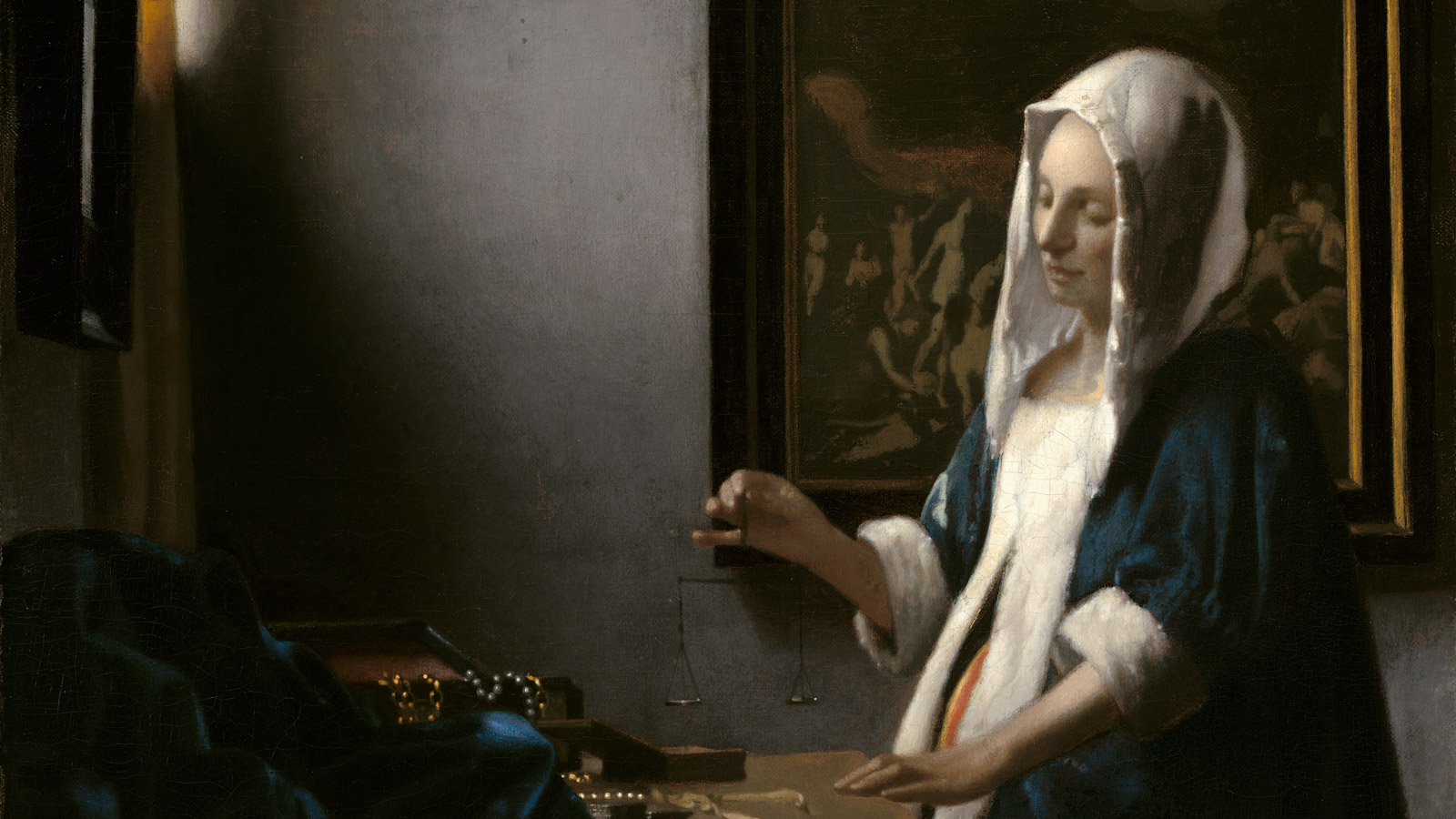10 facts about a famous but mysterious artist
Dutch painter Johannes Vermeer has long remained a mystery. Vermeer is renowned for his singular ability to capture light and create serene, intimate moods in his paintings. But we are missing many details about the artist’s life, training, and craft. Still, what we do know helps us understand Vermeer and his extraordinary works.
He wasn’t always famous.
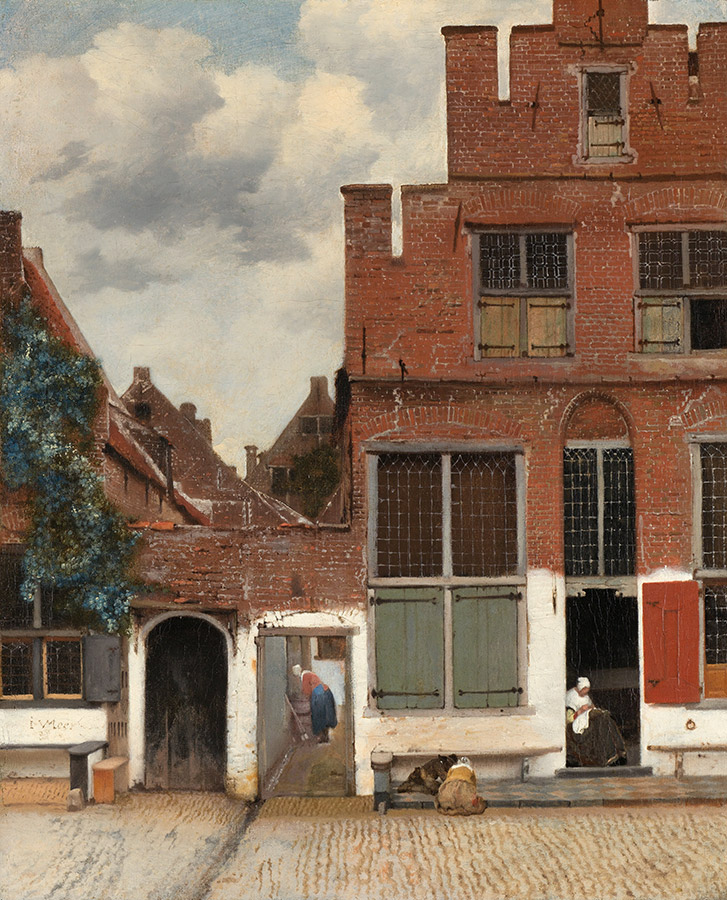
Johannes Vermeer, View of Houses in Delft, Known as The Little Street, c. 1658, oil on canvas, Rijksmuseum, Amsterdam, Gift of H.W.A. Deterding, London, inv. A2860
In his lifetime, Vermeer was not well known outside of his hometown, the walled city of Delft.
He only achieved widespread fame for his intimate genre scenes—paintings that depict ordinary people and everyday life—and quiet cityscapes in the late 19th century, several hundred years after his death. Now there are people who make visiting every known Vermeer painting in the world one of their life goals.
His father was a silk weaver and art dealer.

Johannes Vermeer, A Lady Writing, c. 1665, oil on canvas, Gift of Harry Waldron Havemeyer and Horace Havemeyer, Jr., in memory of their father, Horace Havemeyer, 1962.10.1
Reynier Vermeer produced caffa, a fine satin fabric.
This may be why we see so many fine fabrics in his son’s paintings. Reynier also became an art dealer the year before Johannes was born.
When Reynier Vermeer died in 1652, Johannes inherited his business. Following in his father’s footsteps, he too became an art dealer, as well as an artist.
We don’t know much about Vermeer’s artistic training or influences.

Pieter de Hooch, The Bedroom, 1658/1660, oil on canvas, Widener Collection, 1942.9.33
He probably trained in Delft, perhaps with Leonard Bramer, a Dutch painter who seems to have known Vermeer’s family, or with Carel Fabritius.
He may have studied elsewhere in the Netherlands, possibly in Utrecht or Amsterdam.
We also know little about Vermeer’s relationships with other painters of his day. He apparently knew Gerard ter Borch the Younger, another 17th-century Dutch painter known primarily for genre scenes. Painter Pieter de Hooch may also have influenced Vermeer’s work: he too painted such scenes in Delft during the 1650s.
Vermeer was raised a Protestant, then converted to Catholicism.

Johannes Vermeer, Allegory of the Catholic Faith, c. 1670–1672, oil on canvas, The Metropolitan Museum of Art, New York, The Friedsam Collection, Bequest of Michael Friedsam, 1931, 32.100.18
Vermeer seems to have converted shortly before marrying, perhaps to satisfy his future mother-in-law, Maria Thins.
After his marriage, Vermeer lived in her house near one of the two hidden churches where Catholics could worship. Like other Dutch Catholics, they were forced to practice their faith in secrecy after the Protestant Revolt.
1653 was a big year for the painter.
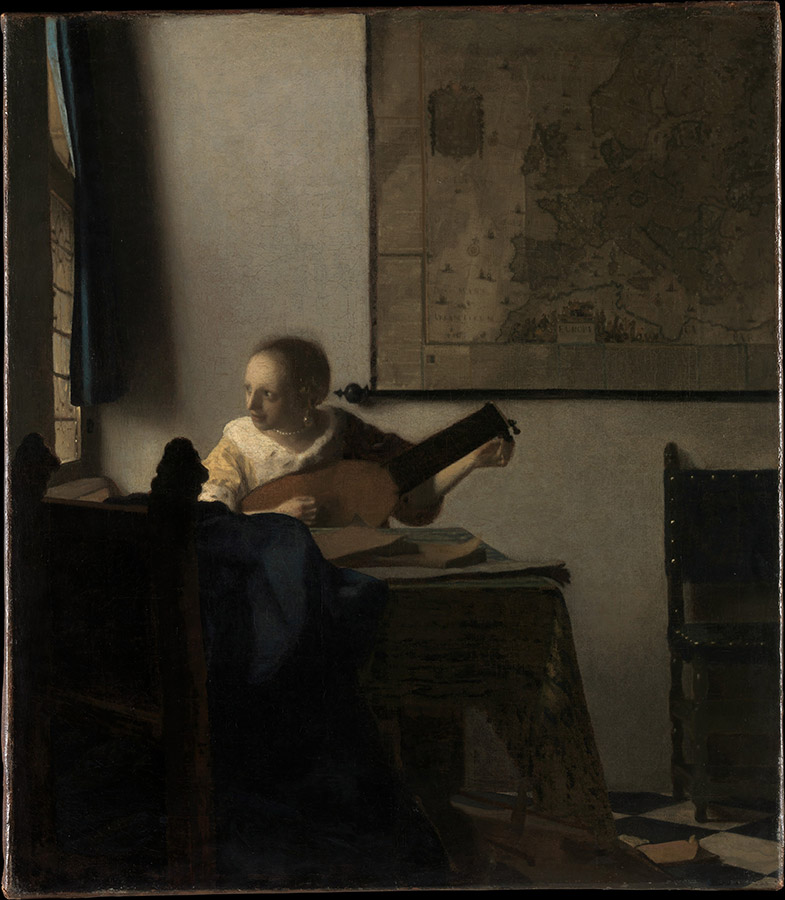
Johannes Vermeer, Young Woman with a Lute, c. 1662–1663, oil on canvas, The Metropolitan Museum of Art, New York, Bequest of Collis P. Huntington, 1900, 25.110.24
Vermeer married Catharina Bolnes in 1653.
In December of that year, he also joined Saint Luke’s Guild, a professional trade organization for artists and artisans. He would serve as the head of that guild four times in the 1660s and ’70s.
His subjects evolved.
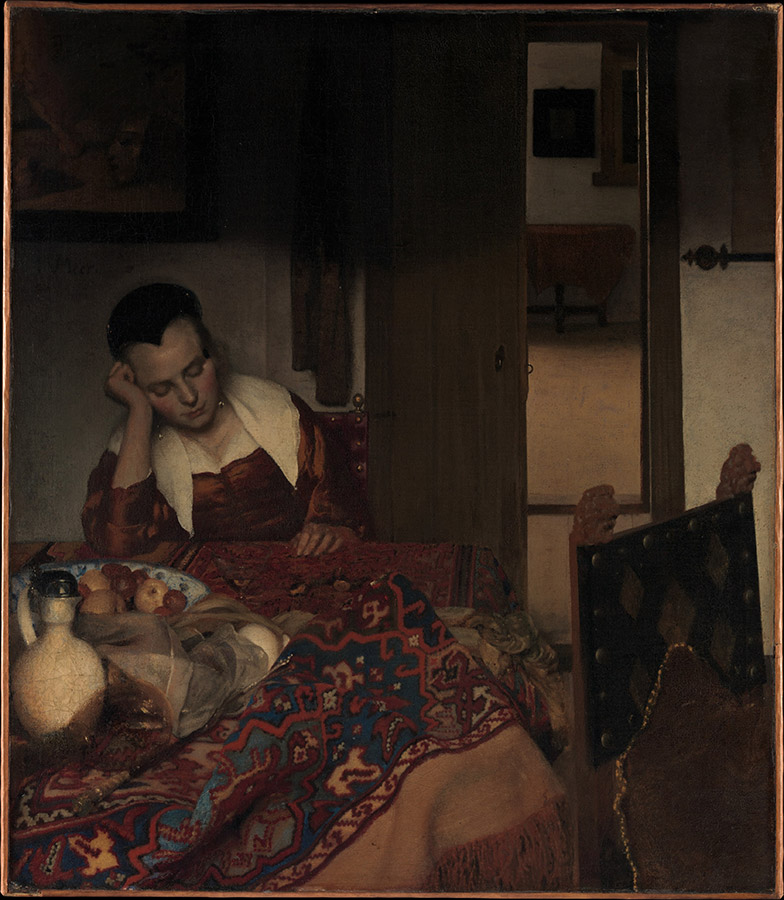
Johannes Vermeer, A Maid Asleep, c. 1656–1657, oil on canvas, The Metropolitan Museum of Art, New York, Bequest of Benjamin Altman, 1913, 14.40.611
At first Vermeer specialized in history painting, and his early works were large-scale mythological and religious paintings.
In the mid-1650s, he began to paint the genre scenes, cityscapes, and allegories we know him for today. Even though Vermeer’s subject matter changed, he continued to imbue his works with the quiet, intimate moods of his early paintings.
We now think Vermeer had a studio.

Studio of Vermeer, Girl with a Flute, c. 1669/1675, oil on panel, Widener Collection, 1942.9.98
For a long time, we suspected that Vermeer was a lone genius.
But recent evidence suggests he may have been a mentor to pupils and studio assistants. Some of the paintings previously attributed to Vermeer himself, such as Girl with a Flute, may actually be the work of an apprentice or other member of his studio.
Vermeer was more spontaneous than we thought.

Johannes Vermeer, Woman Holding a Balance, c. 1664, oil on canvas, Widener Collection, 1942.9.97
Thanks to the polished, controlled paintings we see, we often think of Vermeer as a perfectionist.
But chemical imaging has given us a glimpse of an impetuous, even impatient artist.
Vermeer sometimes began with a painted sketch, then quickly added a bold underlayer to plot out forms, colors, and light. He even used a material containing copper to help speed the drying of black pigment—so he could move more quickly to the painting’s final stages.
Vermeer died in debt.
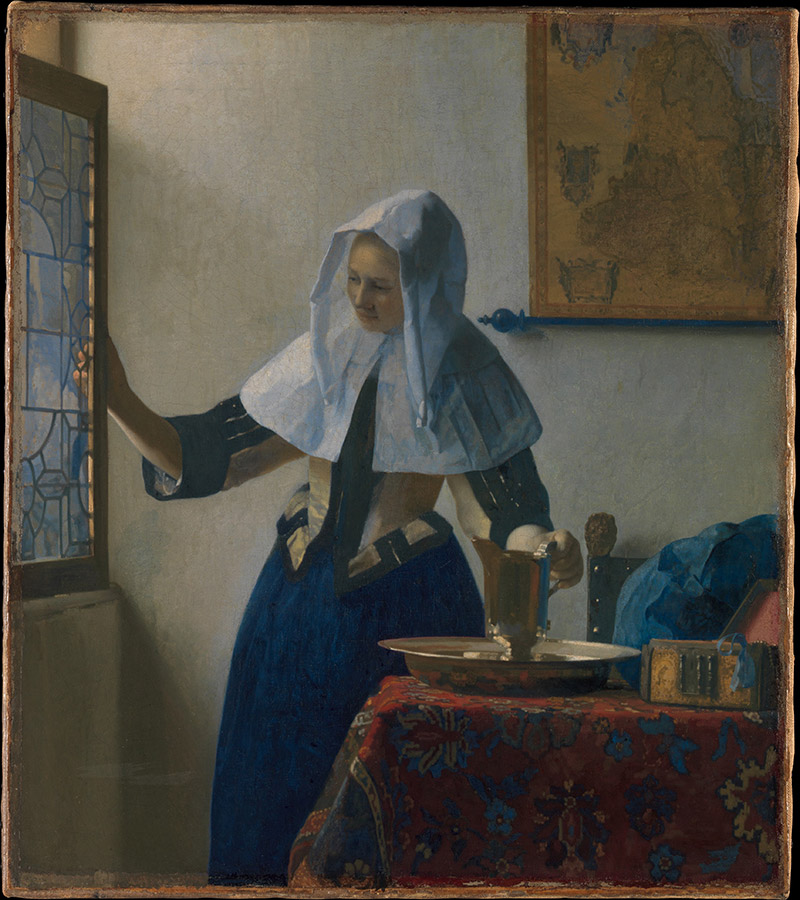
Johannes Vermeer, Young Woman with a Water Pitcher, c. 1662, oil on canvas, The Metropolitan Museum of Art, New York, Marquand Collection, Gift of Henry G. Marquand, 1889, 89.15.21
Although he was a respected artist his entire life, he was heavily in debt when he died in 1675.
He was survived by his wife and 11 children, 10 of whom were minors. His wife petitioned for bankruptcy the following year.
His was a rare but remarkable output.

Johannes Vermeer, Girl with the Red Hat, c. 1669, oil on panel, Andrew W. Mellon Collection, 1937.1.53
Today, there are only about 35 paintings in the world attributed to Vermeer.
The National Gallery has three of them: A Lady Writing, Girl with the Red Hat, and Woman Holding a Balance, plus one attributed to his studio.
Explore related stories
Art in your inbox
Our weekly email features news, events, exhibitions, and more.
